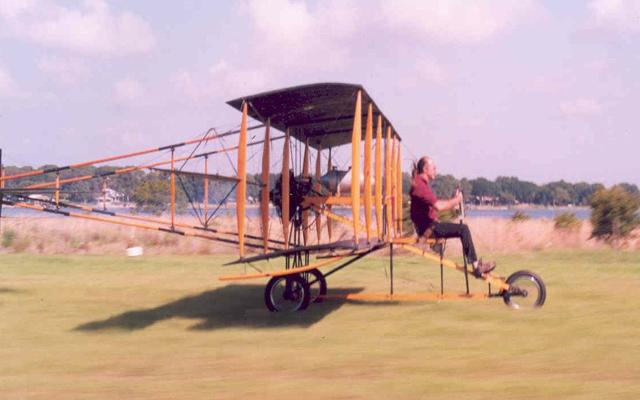
1911 Curtiss Pusher Model D
This Model D Headless Pusher is similar to Curtiss’s earlier Standard Model D Pusher. Both had tricycle landing gears and wing sections that could be easily disassembled for transport. The only difference is that this aircraft does not have the forward elevator.
This design difference came about in a most curious way. Curtiss had demonstration pilots that would perform shows around the country in the aircraft. The aircraft was constructed to be taken apart in sections for ease of shipping. On one occasion, the forward elevator was damaged and could not be repaired in time for a performance. The promoter was not very happy as there were many in attendance that had paid good money to see the airplane fly. The pressured pilot decided to just take the front elevator off and found that the aircraft performed much better without it!
In November of 1910, civilian pilot Eugene Ely took a standard Curtiss Model D and flew from a wooden platform built on the bow of the USS Birmingham. Soon after, in January of 1911, he landed the same Curtiss Pusher on a platform aboard the cruiser USS Pennsylvania in San Francisco Bay. The same day he took off from the ship and returned to Selfridge Field, completing the earliest demonstration of aircraft for shipboard operation.
Specifications
- Year Built — 1911 (original); 1983 (reproduction)
- Wingspan — 38’3″
- Cruise Speed — 50 mph
- Gross Weight — 1,390 lbs
- Original Engine — 4 cylinder inline Roberts (40 hp)
- Current Engine — 1926 Salmson radial (40 hp)
Kermit’s Comments
In the pioneer days, there was no set standard way to operate the aircraft controls. The designer, Glenn Curtiss, had come from a motorcycle racing background and was used to “leaning into” each turn. He set his controls up in a most unusual way. His elevator control worked in the normal sense, where one would pull the control column back for nose up and push it forward for nose down. On this aircraft, your feet do nothing and rudder control is initiated by turning the “steering” wheel. While on the ground, the aircraft could be driven like a car, where turning the wheel to the left would turn the rudder to the left and the nose of the aircraft would turn left. To make a turn in the air though, an aircraft must bank. Curtiss set up his banking control using the side-seat rails (that look like armrests). To fly a Curtiss Pusher, you must unlearn how you were taught to fly and relearn a completely new and different technique.